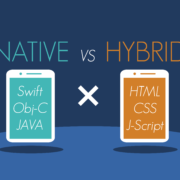On The Other Side of COVID-19
The State of Things Post COVID-19
While the COVID-19 pandemic isn’t completely behind us, we’re certainly close to coming out the other side. It definitely hasn’t been easy, as the road forward hardly ever is, and the last year will absolutely have a lasting impact. One way in which the pandemic impacted the world was through a swift acceleration into digitalization. With stay-at-home mandates, and health risks everywhere, much of society embraced a virtual expansion. Despite the sudden onset of the pandemic, a lot of the world was already prepared for a digital age. During the last few decades, society made giant technological strides. From the birth of the internet, smartphones, mobile apps, VR, AR, and so much more. Correspondingly, this technology already prepared many businesses to allow for remote staff and a work from home environment.
As the world reopens, though, the effects of the COVID-19 pandemic won’t simply just disappear. In fact, the pandemic may have changed the world forever.
Impact on the Application Market
One of the few markets that saw a boom during the majority of the pandemic was the application market. This boom resulted from the intersection of a few key variables. The first; timing. This isn’t the first pandemic that’s swept the world. However, it’s the first pandemic to sweep the world since the birth of smart-tech, loaded with capabilities. This presented opportunity. The second variable; accessibility. In recent years specifically, there has been a push of creating accessible technology. In this same push is the shift to a more technological basis for education that includes coding, script writing, and programming. Finally; free time and isolation.
With smart technology an integrated aspect of everyday life, and the push for more accessible technology all around, the last pair of variables that led to the app market boom were free time, and isolation. With the surge in unemployment, more and more people were looking for a way to spend their days. Not to mention, social interactions were kept to a bare minimum, and stay at home mandates were implemented all over the country. Enter smart, accessible technology, paired with the college of YouTube, and other free avenues through which to learn programming, and suddenly a whole new pool of programmers and developers hit the scene.
That’s only half of the coin though. On the other side of this same perfect storm is the influx of user-base, for all the same reasons the app market saw an increase in developers. New users flocked to applications all across the market, from enterprise, to gaming, to meditation. It was truly a gold-rush.
Spreading The Word
While the surge in app developers, programmers, and users isn’t going anywhere in the post-pandemic wake; applications certainly helped to encourage users to get the vaccine. Organizations in today’s economy have higher expectations to participate in the social atmosphere than they have in previous decades. Corporate America isn’t perfect, by any means, but some of the players are at least trying. In the context of the COVID-19 pandemic, applications specifically, helped to encourage users to get the vaccine. Many applications used advertisement slots on their own dime to inform users on where to get the vaccine for free. Even large name applications like Tinder, and others, offered vaccinated users an incentive, like a free premium trial, date-night specials, or other in-app incentives.
Beyond Spreading The Word
Applications and technology helped us through the pandemic in more than one way, though. Applications also saw a boom in usership as they worked to bring people together in dire times, unlike any technology has before. Video conference applications like Zoom saw unprecedented growth as families relied on it to commune with one another, long distance relationships only survived because of it, and businesses got by with it. Gaming applications became a way for communities to develop even while individuals dealth with physical or mental isolation.
Enterprise applications were another market segment to see an influx during the COVID-19 pandemic. As businesses and organizations of all industries had to adapt to the virtual economy; many sought the help of enterprise applications. Business oriented applications designed to facilitate communication and collaboration between remote employees.
Beyond spreading the word, and bringing communities together, the technology available even helped in the actual creation and distribution of the vaccine itself. Discovering optimal distribution channels, running algorithms, and elevating scientific processes, the technology of today is, at least partially, responsible for the availability of the vaccine across the globe.
Looking Ahead
Moving forward, there is some question as to what the lasting impacts of the COVID-19 pandemic will be. However, there are some trends that certainly seem stickier than others. For instance, it’s quite possible that the majority of the workforce remains remote, as there seems to be little-to-no evidence that professionals were less effective working remotely. On the contrary, many studies found that the individual professional was more proficient working from home than they were in the office for a variety of reasons, and largely attributed to quality of work-life balance. Additionally, the lack of a commute to and from work, proved significantly beneficial to workers mental and emotional health, which ultimately led to stronger overall performance.
The application market as a whole, is also likely to remain in a ‘boom’ period. While a large percentage of amateur programmers and developers might begin to drop off from the scene, there are bound to be a few who fell in love and stick around. Not to mention, the influx in the userbase is likely going to see a much softer dropoff. Therefore, there will ultimately be a higher user-to-developer ratio in the application markets than we even saw during the height of the pandemic.
The Virtual Economy
In addition to the trends that are likely to stick around, the virtual economy is likely here to stay. Permanently. Businesses and organizations of all shapes and sizes faced a sobering reality during the pandemic. Supply chains all over the globe disintegrated into thin air, as a tragic number of smaller businesses closed their doors. The organizations that successfully pivoted from in-person operations to remote or virtual operations are the survivors. Larger organizations that took a financial hit also had to make the pivot from brick and mortar to remote operations. This is a lesson that won’t be soon forgotten. In fact, current and future businesses are more likely to offer remote services and virtual operations now, and moving forward, than any type of in-person services. If it’s possible to be digitized, it will be.
Of course, the entire world won’t stay virtual forever, with live-performances opening back up, and bars and restaurants inviting customers back indoors, a portion of society will always be personable.
A Brighter Future Beyond COVID-19
The last year+ of the COVID-19 pandemic really flipped the script in more way than one. Between the massive influx into the application market, and the push for a more digital economy; some of these soceital changes and trends are going to remain long after the last case of the COVID-19 pandemic.
For more information on the application market as it stands, or help planning out your next mobile app venture, keep browsing NS804. NS804 is the proud developer of the everyday appreneur.












Leave a Reply
Want to join the discussion?Feel free to contribute!